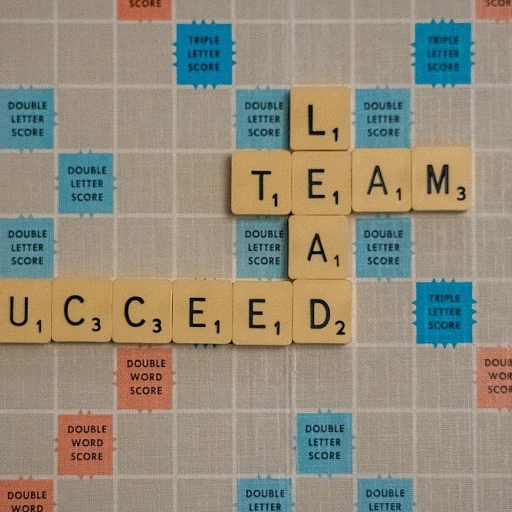
The Role of HR Charts in Strategic Decision-Making
The Strategic Role of HR Charts
In today’s dynamic business environment, HR charts have emerged as vital tools in strategic decision-making. With the increasing complexity in organizational structures, the role of visual data representation cannot be overstated. HR charts provide a clear picture of the company's organizational structure, detailing the number of employees in different departments and showcasing the hierarchy within the organization. For chief human resources officers, the ability to interpret this data for effective resource management is crucial. They are tasked with the responsibility to utilize these charts to analyze the company's array of human resources, which in turn supports efficient decision-making processes. Through this lens, an org chart, for instance, serves more than just a graphical representation; it becomes a strategic map guiding human resource initiatives. Analyzing organizational charts enables HR leaders to identify gaps and opportunities for streamlining roles and responsibilities. They can assess how well the current structure supports the company's goals and make data-driven decisions to realign the workforce as needed. This not only helps in optimizing performance management but also enhances employee engagement across teams. Dashboard examples and software tools have made it easier for organizations to maintain up-to-date org charts that reflect real-time changes. This empowers HR leaders to develop proactive strategies, thereby ensuring seamless adaptation to business changes. Aspiring CHROs should develop a keen understanding of the strategic role of a Chief Human Resources Officer as they embark on this career path, as HR charts will play a central role in their ability to foster growth and innovation within the company.Types of HR Charts and Their Applications
Exploring Various HR Chart Types
To navigate the dynamic world of human resources, particularly for an emerging chief human resources officer, understanding different HR chart types is essential. These charts serve as foundational tools in visualizing the organization's structure and functions, aiding in streamlining resource management and improving overall decision-making processes. One pivotal chart is the org chart or organizational chart. This chart provides a snapshot of an organization's hierarchy, defining roles and responsibilities within departments. A clear organizational chart empowers management by depicting the human resources structure, enabling more strategic planning for the number of employees needed and how they fit into the company's goals. Another vital tool is the process flowchart. This chart visually outlines workflows and processes within the organization. Human resources teams utilize such flowcharts to identify bottlenecks and inefficiencies, facilitating more seamless operations and strategic alignment across various departments. The dashboard has become indispensable in the realm of people analytics. Dashboards offer real-time data insights concerning performance management, employee engagement, and other critical HR metrics. Management can leverage dashboards to monitor key trends and rapidly respond to emerging challenges, assuring informed decision making. Furthermore, there are specialized charts like the org charts and role-specific dashboards, which cater to specific facets of the organization's human resources needs. These charts offer granular insights, such as individual department performances or the effectiveness of specific team structures. Understanding these diverse charts not only enhances HR analytics but also amplifies the organization's ability to strategically plan and allocate resources effectively. For those pursuing a career as a chief human resources officer, mastering these tools is crucial. For more insights, consider exploring the role of a Chief Human Resources Officer and their pivotal influence within a company.Interpreting HR Charts for Workforce Planning
Decoding Charts for Workforce Dynamics
Interpreting charts for workforce planning is crucial in understanding how a company's human resources can be strategically deployed to meet organizational goals. Charts offer valuable insights into various aspects of workforce dynamics, enabling management to visualize the company’s structure and performance. Here’s how to utilize them effectively:- Comprehensive Data Analysis: Employee data and organizational charts provide a visual representation of an organization's structure. These charts can include data on the number of employees in different departments, performance metrics, and even employee turnover rates. By analyzing these, human resource professionals can make informed decisions on staffing needs.
- Identifying Employee Needs: Organizational charts are key in identifying gaps in staffing and skills within departments. When used alongside performance management and resource management data, human resources can optimize employee allocation and recruitment.
- Visualizing Growth and Stability: Tracking changes over time with dashboards that integrate real-time data enables businesses to monitor growth and stability. This allows organizations to plan for future hiring needs and budget accordingly, ensuring resource allocation aligns with business objectives.
- Enhancing Communication and Clarity: Implementing org charts and dashboards helps in delineating roles and responsibilities. This clarity is essential for employees and management to understand the company’s organizational structure and enhance communication within teams.
Leveraging HR Charts for Employee Engagement
Maximizing Employee Engagement Through Data Visualization
Effective employee engagement lies at the heart of a successful organization. To understand and improve engagement, human resources leaders are increasingly turning to visual tools such as charts and dashboards. These visualization tools, like organizational charts and process flowcharts, provide key insights into the overall structure and operation of a company. By integrating data from various departments, charts help HR professionals identify patterns and trends that affect employee morale and productivity. For instance, employee satisfaction can be visually represented through performance management charts, allowing leaders to pinpoint areas of improvement. Additionally, real-time data from software platforms can be used to manage resources and track engagement metrics across different business units. Organizations can also utilize people analytics to create targeted employee engagement strategies. Through analysis of data regarding organizational structure and roles responsibilities, HR leaders can ensure each team member feels valued and understood within the company structure. Furthermore, considering the management of a resource organization is critical in small businesses, where the number of employees dictates resource allocation. By leveraging various dashboard examples, HR leaders can facilitate better communication and engage teams effectively, driving overall business success. Such insights allow for a nuanced approach to resource management, ultimately fostering a more engaged and productive workforce.Challenges in Utilizing HR Charts
Confronting the Obstacles of HR Chart Utilization
In the ever-evolving landscape of human resources, HR charts serve as pivotal instruments that can either propel an organization forward or stall its progress. While they are invaluable tools, challenges arise in their effective utilization, particularly when it comes to integrating them across departments and functions. Organizations must navigate these challenges wisely to truly harness the power of data-driven insights.- Data Accuracy and Quality: One of the primary hurdles is ensuring the accuracy and reliability of the data displayed in HR charts. Inaccurate data can lead to misinformed decision-making and can cloud the true situation of an organization's resources. Regular audits and a robust data management process are essential to maintain high data quality.
- Complexity of Data Interpretation: HR charts can sometimes be complex, especially when dealing with large volumes of data and sophisticated analytics. This complexity can lead to misinterpretations, affecting the organization's strategy. Providing training to the employees on understanding chart data is a critical step.
- Integration with Existing Systems: For many companies, existing legacy systems present a challenge when integrating with new HR chart software. Ensuring seamless integration requires careful planning and investment in compatible solutions.
- Real-Time Data Access: Even with advanced systems, accessing updated, real-time data can be challenging, especially for organizations operating on a global scale with distributed teams. Investing in advanced dashboards and software that support real-time data processing is crucial.
- Change Resistance: Organizational change often meets resistance, and the implementation of new tools like HR charts is no exception. Employees and management might be hesitant to adapt to new processes, which makes change management strategies vital for successful implementation.
Future Trends in HR Chart Utilization
Anticipating Future Transformations in HR Charts
The dynamic landscape of human resources is continually reshaping the ways in which organizations utilize HR charts. As chief human resources officers aim to enhance strategic decision making, staying informed about emerging trends in HR chart utilization is essential.Emerging human resources technologies are rapidly advancing, equipping HR departments with sophisticated tools to manage and analyze data more effectively. The integration of artificial intelligence and machine learning into HR software is transforming how organizations visualize employee data. These technologies enable real time updates and predictive analytics, facilitating more informed decision making.
Additionally, as workplaces become increasingly diverse and complex, the demand for customizable and interactive dashboards grows. Organizations are migrating towards systems that allow for more tailored data views, supporting diverse organizational structures and unique company goals.
- Organizational Agility: As companies adopt more flexible and decentralize structures, HR charts will increasingly reflect dynamic roles and responsibilities. This shift will necessitate the need for adaptable org charts that can illustrate fluid team structures and rapidly changing workflows.
- Enhanced Employee Insights: As data analytics become more integral, HR charts offer rich insights into employee performance and engagement. With a focus on people analytics, organizations can better understand factors contributing to employee satisfaction, aiding in resource management and organizational alignment.
- Integration with Performance Management Systems: Future HR charts will likely integrate closely with performance management systems, providing a comprehensive view of employee growth and development. This integration supports a holistic approach to human resources, bridging the gap between data analysis and actionable strategies.
To effectively navigate these future trends, HR leaders must embrace continuous learning and adaptability. By leveraging advanced technological tools and fostering an innovative organizational culture, human resources departments can drive sustainable growth and success through refined chart utilization.












